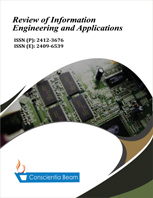An Unified Approach by Implementing the Secured Authentication Protocol Scheme in Wireless Sensor Networks
DOI:
https://doi.org/10.18488/journal.79/2014.1.1/79.1.24.38Abstract
Wireless Sensor Networks (WSN) is an ad-hoc mobile network and is highly vulnerable to attacks because, it consists of various resource-constrained devices and they communicate via wireless links. Security of group communication for large mobile wireless sensor network hinges on efficient authentication protocol scheme. Consequently, one of the most primary challenge, on endow with the security services in sensor nodes are key distribution. Secure communications in wireless sensor networks are critical. As the wireless medium is characterized by its lossy nature, reliable communication cannot be assumed with pair-wise keys, LOCK (Localized Combinatorial Keying) and Structured Graphs etc. Therefore, security with key distribution is a good factor considered in wireless sensor network communications. The only requirement for a user is to send information in a reliable manner to the destination; this will be provided only with the security. In this regard, a novel secured authentication protocol scheme with finger-print scheme provides full security and very good resilience is proposed. It also has low transaction overhead and reduced less space overhead. This novel method produces good improvements in the functionality of security.

